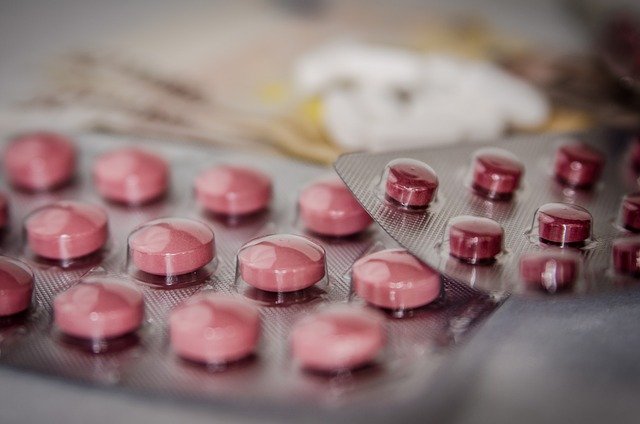Angioedema treatment: causes, emergency care, and follow-up
Angioedema is a rapid swelling of the deeper layers of the skin or mucous membranes that often affects the face, lips, and tongue. Episodes can be alarming because swelling may progress quickly and, in some cases, threaten the airway. Understanding common causes, immediate steps to take, and longer-term treatment options helps people and clinicians manage episodes more effectively while minimizing complications.

This article is for informational purposes only and should not be considered medical advice. Please consult a qualified healthcare professional for personalized guidance and treatment.
What causes angioedema and who is at risk?
Angioedema results from increased permeability of blood vessels in specific tissues. It can be allergic (histamine-mediated), drug-induced (for example, ACE inhibitors), or non-allergic due to bradykinin excess such as hereditary angioedema (HAE). Allergic triggers often include foods, insect stings, or medications. Hereditary forms are genetic and can present in childhood or adulthood without an allergic trigger. People with a history of allergies, those taking certain medications, and those with family histories of angioedema are at higher risk.
Identifying the type matters because treatments differ. Histamine-mediated angioedema typically responds to antihistamines and corticosteroids, while bradykinin-mediated angioedema does not. Clinicians use patient history, medication review, and, when hereditary angioedema is suspected, blood tests (like complement levels) to guide diagnosis and treatment planning.
How does angioedema cause swelling in the face?
Swelling occurs when fluid leaks from small blood vessels into surrounding tissues. In the face, this can present as puffiness around the eyes, cheeks, or jaw and may be asymmetric. Facial swelling is distressing but often not life-threatening unless it involves the oropharynx. External measures such as cool compresses and elevation can provide symptomatic relief for mild episodes while medical therapy reduces the underlying inflammatory or vascular process.
Because facial tissue is loose and vascular, swelling can look dramatic even with a modest degree of fluid accumulation. When the face is involved alongside other symptoms such as hives, itching or breathing difficulty, it suggests a systemic allergic reaction, and prompt medical assessment is warranted.
When lips and tongue are affected: emergency signs
Swelling of the lips or tongue should prompt rapid evaluation because it can signal impending airway compromise. Warning signs include hoarseness, difficulty swallowing, drooling, noisy breathing, stridor, or shortness of breath. If any of these occur, emergency medical care is necessary. In emergency settings, clinicians prioritize airway protection — this can include administration of epinephrine for anaphylaxis, supplemental oxygen, and preparation for intubation if needed.
For less severe lip or tongue swelling without breathing problems, antihistamines and corticosteroids may be used for allergic causes. For bradykinin-mediated swelling (ACE inhibitor-related or hereditary), typical antihistamines and steroids are often ineffective and different therapies, such as bradykinin pathway inhibitors, may be considered by specialists.
What treatments and long-term management exist?
Acute management depends on cause and severity. For suspected allergic angioedema, first-line measures include removal of the trigger, antihistamines, and corticosteroids; epinephrine is indicated for anaphylaxis. For ACE inhibitor–induced angioedema, stopping the medication is essential; patients should be evaluated for alternative blood pressure agents. Bradykinin-mediated angioedema (including HAE) often requires specific therapies such as C1 inhibitor concentrates, bradykinin receptor antagonists, or kallikrein inhibitors — these are administered in clinic or emergency settings depending on availability.
Long-term strategies focus on prevention and access to care. People with recurrent episodes may work with allergists or immunologists to identify triggers, consider prophylactic medications, or obtain emergency treatment plans and carry necessary medications. For hereditary angioedema, approved prophylactic agents and self-administered acute therapies can reduce frequency and severity of attacks. Lifestyle measures — stress management, infection control, and avoiding known triggers — also play a role.
Follow-up care and finding local services in your area
After an acute episode, follow-up with a primary care provider or a specialist helps establish the cause, adjust medications, and arrange preventive care. Diagnostic testing might include complement studies when HAE is suspected, or allergy testing if triggers are unclear. Local services such as allergy clinics, immunology specialists, and hospital emergency departments can provide assessments, prescriptions for emergency medicines, and written action plans for future episodes.
If you experience recurrent angioedema, ask your clinician about an individualized emergency plan, whether you should carry an epinephrine auto-injector, and options for specialist referral. For medication-related angioedema, your provider can recommend safe alternatives and document the reaction in your medical record.
Conclusion
Angioedema is a symptom with several different causes; accurate identification of the underlying mechanism guides effective treatment. Immediate care focuses on airway protection and symptom control, while specialist-directed therapies and preventive strategies can reduce recurrence and risk. Work with qualified healthcare professionals and local services to develop a clear, personalized plan for acute episodes and long-term management.






